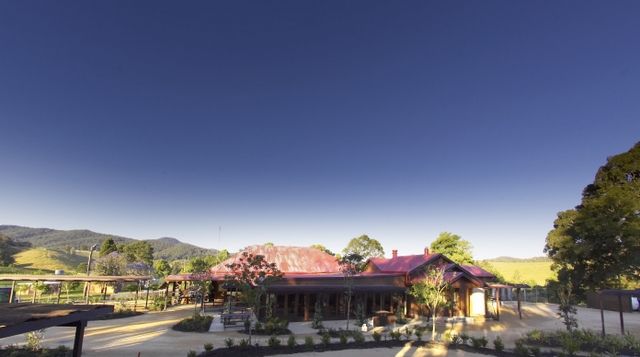Americans who are told that Fosters is “Australian for beer” may scratch their heads with confusion when they land on our shores expecting to be greeted with barbequed shrimp and “Australia’s beer.” They would be hard-pressed to find the blue, white and gold label during their visit Downunder and they definitely won’t find the famous oil cans.
A quiet and flavorful revolution is starting to take place in Australia, one that in many cases is inspired by American beers and even American brewers.

Murray’s, the Pub with no Beer, Taylor’s Arm, New South Wales (Murray’s)
While it is a great tagline and Fosters is Australia’s most successful beer brand export (the beer itself isn’t exported), it is rarely consumed in Australia. The title of most popular beer in Australia instead falls to another label from the Fosters stable, Victoria Bitter—or, more simply, “VB,” with just over seventeen percent of the national market.
Although they won’t find Fosters, visitors will find plenty of beers that taste similar. In a blind tasting between Fosters, VB and many of the other mainstream beers, most Australians would be hard pressed to pick “their” beer, such is the similarity of the Australian lagers—and to most Australians lager is beer and beer is lager.
But a quiet and flavorful revolution is starting to take place, one that in many cases is inspired by American beers and even American brewers. It’s a revolution that had its seeds sown in the late 1980s.
Like the United States, the Australian brewing industry spent much of the 20th century in a period of slow consolidation resulting in a handful of breweries producing mainly lagers. Despite their similarities, these brews were sold almost exclusively within state borders. Whether this was due to drinker parochialism or gentlemen’s agreements between brewing companies not to encroach on each other’s patch is debatable, but it meant that in enormous states like Queensland you would have the bizarre situation of the “state” beer, XXXX, being shipped 1000 miles north to Cairns but not 70 miles south to towns the adjacent state of New South Wales.
The 1980s ushered in a period of wheeling and dealing in the beer industry that saw the spectacular rise and fall of brewing entrepreneurs such as Alan Bond, whose Bond Brewing briefly straddled the globe—including a foothold in the United States where he owned G. Heileman—before spectacularly crashing in the early ‘90s.
In the washup, two major brewers, Fosters Group and Lion Nathan, remained, controlling between them in excess of 95 percent of the Australian beer market. Like all of the major international lager producers, these companies made beers that were perfectly consistent, light and unchallenging for the average drinker. They were popular but they also call to mind a famous joke involving Coors and a canoe.
The great irony of the Australian craft scene is that the man who is perhaps most identifiable with the current growth of flavorsome craft beer led the team that developed Coors Light in the 1970s.









